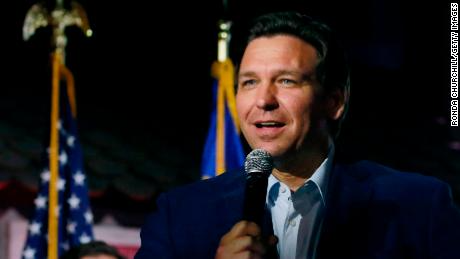
Florida Governor Ron DeSantis (R) made waves in September when he flew 48 migrants who had been released by DHS after apprehension at the Southwest border to Martha’s Vineyard, Mass. Although “experts” at the time asserted the incident would cost DeSantis politically, those flights and the governor’s other efforts to crack down on illegal immigration likely bolstered his reelection bid in the Sunshine State, where he cruised to victory on Tuesday.
Martha’s Vineyard. Republican governors in Texas and Arizona had been busing Southwest border migrants to Washington, D.C., for weeks before DeSantis chartered two planes to take about four dozen others — mostly Venezuelan nationals — to the toney Massachusetts beach resort on September 14.
He wasn’t shy about his reasons for doing so. According to ABC News, DeSantis told rally-goers in Wisconsin four days later: “l'll tell you this: The border is now an issue in these elections. ... It's on the ballot, and we got to make the most of it.”
While the governor gained praise from some quarters for his actions, they also gained the attention of federal investigators and the ire of political opponents, who derided the flights as a “stunt”.
DeSantis’ Efforts to Crack Down on Illegal Immigration. Stunt or not, those flights were part-and-parcel of DeSantis’ efforts to crack down on illegal immigration in his state.
He started right out of the gate during his first gubernatorial campaign in 2018, echoing many of then-President Donald Trump’s anti-illegal immigration talking points, running a campaign ad teaching his then-toddler son how to “build the wall”, and depicting his then-primary opponent, former Florida Agricultural Commissioner Adam Putnam (R), as “Amnesty Adam” for endorsing the June 2013 Schumer-Obama Gang of Eight immigration amnesty.
He has been dogged on the issue since taking office. In June 2019, DeSantis signed a bill barring so-called “sanctuary” jurisdictions in his state and requiring such entities to “support and cooperate with federal immigration enforcement”.
In December, the governor introduced a number of proposals to “fight illegal immigration and protect Floridians from the Biden Border Crisis”.
In addition to supporting legislation to strengthen E-Verify enforcement, those proposals included an emergency rule to deny state licenses or license renewals to HHS shelters for unaccompanied alien child (UAC) migrants unless the federal government entered into a “cooperative agreement” under which Florida would be provided with notice before UACs were moved into the state.
In April, DeSantis joined 25 other GOP governors in an “American Governors’ Border Strike Force” to improve intelligence sharing and better position the states to combat drug- and human-smuggling in their jurisdictions.
In June, he used his powers to ask the Florida courts to impanel a grand jury that would examine various immigration-related “crimes and wrongs” residents and local officials there may have engaged in.
The list goes on.
The Election Results. Nonetheless, his pro-border and anti-illegal immigration stance does not appear to have cost DeSantis politically and likely bolstered his support in heavily Hispanic Florida counties.
With 99 percent of the votes counted, DeSantis defeated his Democratic opponent (and former Republican Florida governor) Charlie Crist by more than 19 points, 59.4 percent to 40 percent.
Significantly, DeSantis beat Crist by more than 11 points in Miami-Dade County, where 69 percent of the residents — nearly two million individuals — are Hispanic, many of them Cuban-Americans. As the New York Times explained on November 5, the county was “once a lock for Democrats”, but “not anymore”.
Note that DeSantis lost Miami-Dade in his first gubernatorial run by 21 points, meaning that his win there Tuesday represented a 40-point swing in support.
It’s not just that Cuban enclave, however.
DeSantis also won by more than six points in Osceola County, defeating Crist 52.8 percent to 46.1 percent. Some 56.3 percent of the 400,000-plus residents there identify as Hispanic, and as of 2018, nearly 124,000 of them were Puerto Rican, many of whom fled the island in the wake of the September 2017’s Hurricane Maria. In addition, about 5.6 percent are from South America.
Hardee County, in south-central Florida, has a much smaller population of just over 25,000, and about 44 percent of the residents are Hispanic, with Mexicans as the largest ethnic group. DeSantis captured more than 82 percent of the votes in that county in 2022, compared to just 17 percent for Crist.
There was a similar trend in Hendry County, part of which borders the shores of Lake Okeechobee. Of the more than 40,000 residents in the county, 56.5 percent identify as Hispanic, seven-eighths of them Mexican by ethnicity. DeSantis romped there, winning more than 74 percent of the votes cast, to less than 25 percent for Crist.
Take it from Florida’s voters: Ron DeSantis has shown that “pro-enforcement” does not equal “anti-immigrant”, and also that when the chaos at the Southwest border “is on the ballot”, even foreign-born voters cast ballots against it.
